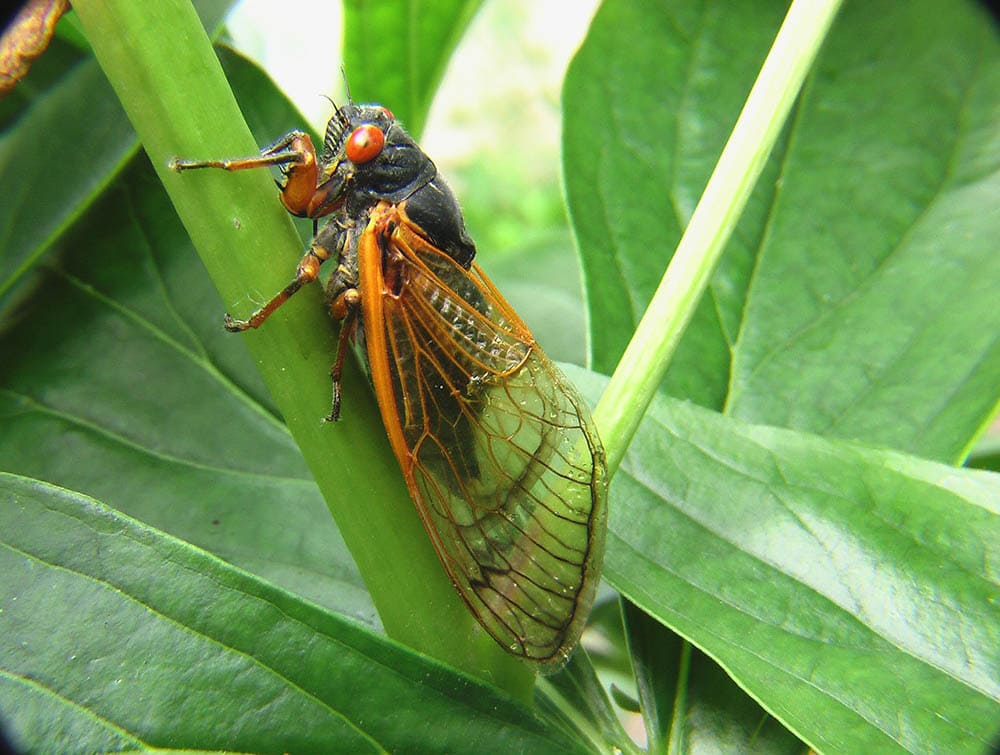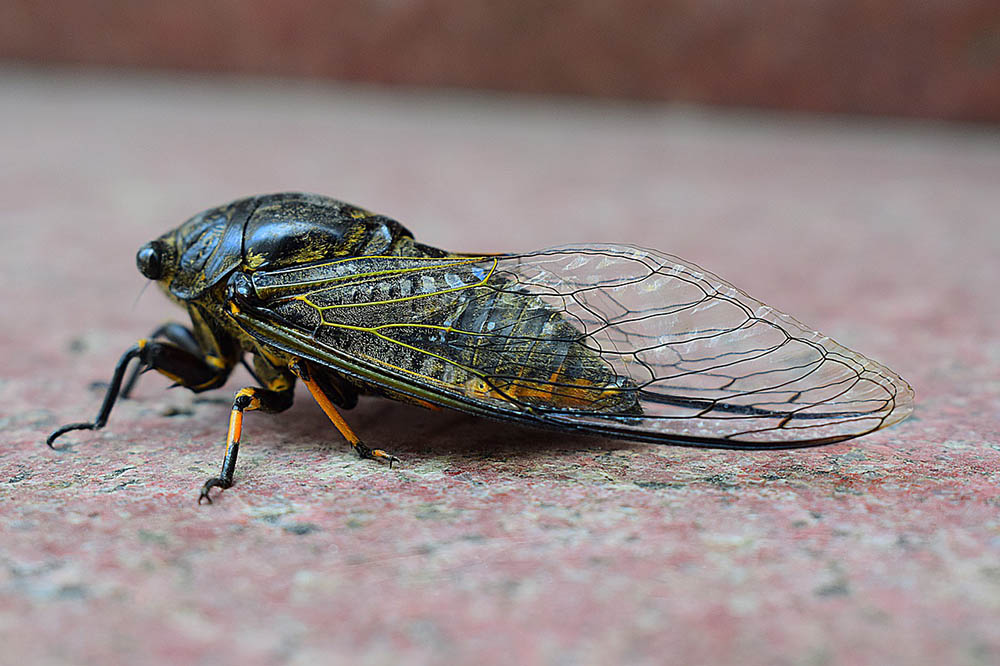Do Birds Eat Cicadas? What You Need To Know!
Last Updated on

Practically every animal will eat a cicada if given the opportunity, including birds. However, only a few bird species have actually been documented as eating cicadas. Larger species, such as herons, gulls, and cuckoos, eat cicadas. Smaller species will only eat cicadas on occasion.
The fact that not all birds eat cicadas is interesting. After all, cicadas are not toxic to birds, and they would provide an excellent food source to all bird species. Even so, only a handful of birds actually eat cicadas on a regular basis.
If you are interested in learning more about which birds eat cicadas, keep reading. This article investigates the frequency of birds eating cicadas and why not all birds chow down on this big bug.

What Birds Eat Cicadas?
Researchers list birds as the number one predator of cicadas. Even so, only a small portion of birds actually eat cicadas regularly. According to a study published at Avian Research, only about 16% of bird species are found to consume cicadas. In other words, not even 25% of all birds in the research area eat cicadas. This is a shockingly low number.
It was found that the birds most likely to eat cicadas were terrestrial, large-sized adults. For example, bee-eaters, falcons, crows, and woodpeckers were the most common predators of cicadas. Here is a more comprehensive look at the types of birds known to eat cicadas:
- Bee-eaters
- Buntings
- Cardinals
- Crows
- Cuckoos
- Falcons
- Flycatchers
- Gulls
- Jays
- Larks
- Owls
- Shrikes
- Wagtails
- Woodpeckers
Even though larger birds are the most common avian predators, some smaller birds will eat cicadas on occasion. Chats, sparrows, starlings, thrushes, tits, and warblers are all examples of smaller species that will eat cicadas. It’s much more common for the larger varieties to eat cicadas than the smaller ones, though.
When smaller species do eat cicadas, they are more likely to eat nymphs than full-grown adults. Nymphs are the cicada young and often buried in the ground. In fact, cicada nymphs are often fed to recent hatchlings from the mother.

Why Don’t All Birds Eat Cicadas?
All bird species eat insects, plant material, fruits, and nuts. Because birds eat insects, cicadas would seem to be the perfect treat for birds. Especially since so many cicadas are around at once, you would think that birds would take the opportunity to chow down on these insects.
As we learned above, that is simply not the case—the majority of birds never touch a cicada. Scientists and birdwatchers are baffled by this phenomenon. To date, there is no agreed-upon consensus to explain why not all birds eat cicadas.
For starters, cicadas are not toxic to birds or most other animals. Scientists have been tracking cicadas and birds to try to determine why so many birds avoid cicadas. Here’s a look at some of the most common hypotheses:
Birds Are Afraid Of Cicadas
It is possible that birds are afraid of cicadas. They make a loud noise, which may encourage smaller birds to stay away from the area. Because the smaller birds stay away, they never get the opportunity to even see the cicada in the first place.
Even if birds see the cicadas, they might still be afraid of them. They are very large insects, and some smaller birds may be unsure whether or not they can take the insect on.
Cicadas Are Too Big
Cicadas are pretty large. Perhaps, smaller birds avoid cicadas purely because of their size. The smaller birds may not be confident in their ability to take on the insect, which would explain why large birds are more likely to eat cicadas than smaller ones. This hypothesis is further supported by the fact that smaller species will eat the nymphs, but not the adult cicadas.
Cicadas Drown Out Songs
Birds sing in order to communicate. Often, males are the ones responsible for singing. They sing to attract females or to keep other males off their turf.
As you probably know, cicadas make a loud buzzing sound. It is possible that this buzzing sound keeps birds away simply because it drowns out the bird’s songs. If birds stay away from the buzzing sound, they are less likely to be around cicadas to eat them.

What Animals Eat Cicada Bugs?
Birds are far from being the only species that eat cicadas. In fact, just about every animal and other insects eat cicadas. Birds, snakes, squirrels, and insects are the most common predators of cicadas. Even mouthless fungi will consume cicadas!
Cicadas are not toxic to practically any animal—they are even eaten by humans, even though this is not particularly common anymore. The only humans who should not eat cicadas are individuals who are allergic to shellfish, as cicadas often trigger the same allergic reaction.

Conclusion
Birds can eat cicadas, but it happens way less frequently than you may think. Larger bird species are most likely to eat cicadas, whereas smaller species either outright avoid them or prefer the nymphs. Birds aren’t the only animals that eat cicadas. Practically everything is a predator for a cicada!
Unfortunately, it is unclear why so few birds actually eat cicadas. It might be because birds are afraid of them or they are too big and drown out the songs. Scientists are continuing to study the relationship between birds and cicadas to figure out why this is the case.
Until then, we are left wondering why birds avoid cicadas, despite the fact the insect would be a delicious source of protein for them.
Featured Image Credit: parlansky, Pixabay
About the Author Robert Sparks
Robert’s obsession with all things optical started early in life, when his optician father would bring home prototypes for Robert to play with. Nowadays, Robert is dedicated to helping others find the right optics for their needs. His hobbies include astronomy, astrophysics, and model building. Originally from Newark, NJ, he resides in Santa Fe, New Mexico, where the nighttime skies are filled with glittering stars.
Related Articles:
What Is the Best Binocular Magnification for Hunting? Optical Features Explained
Can You Use Binoculars to Look At Stars? How to Choose the Right Pair
10 Types of Hummingbirds in Arkansas (With Pictures)
8 Types of Hummingbirds in Nebraska (With Pictures)
5 Types of Hummingbirds in Idaho (With Pictures)
3 Types of Hummingbirds in Mississippi (With Pictures)
8 Types of Hummingbirds in Kansas (With Pictures)
5 Types of Hummingbirds in West Virginia (With Pictures)
